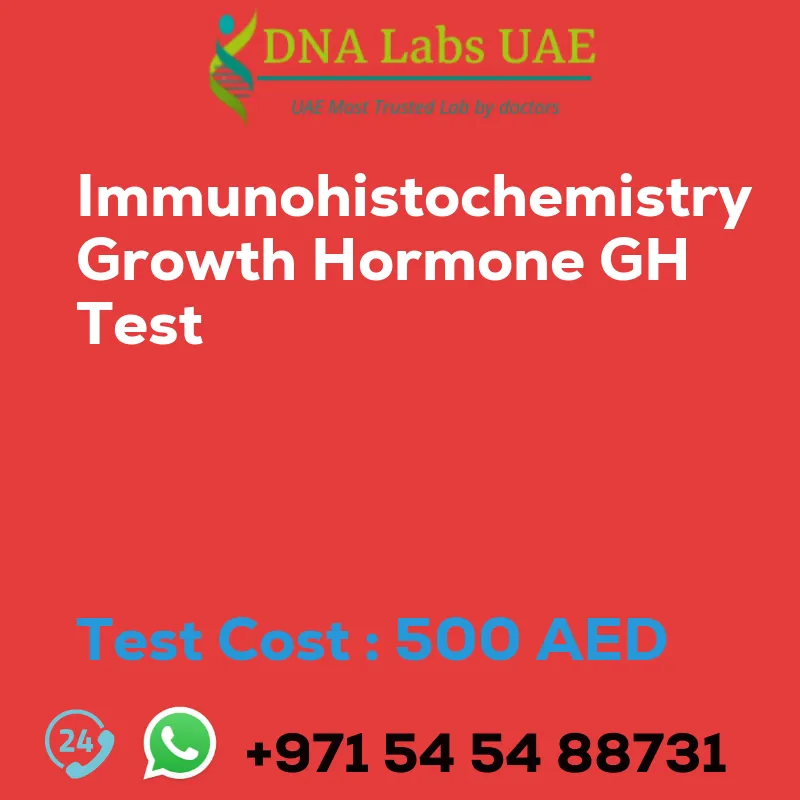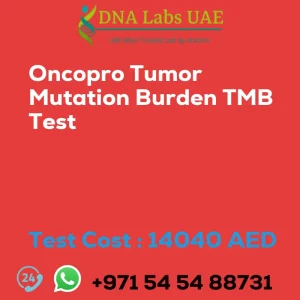IMMUNOHISTOCHEMISTRY GROWTH HORMONE GH Test
Cost: 500.0 AED
Symptoms and Diagnosis
For the IMMUNOHISTOCHEMISTRY GROWTH HORMONE GH test, symptoms and diagnosis may vary depending on the specific condition being tested for. It is important to provide a copy of the Histopathology report, Site of biopsy, and Clinical history to the doctor or oncologist conducting the test.
Test Components
The IMMUNOHISTOCHEMISTRY GROWTH HORMONE GH test includes the following components:
- Immunohistochemistry
- Cancer
- Oncologist, Pathologist
Pre-Test Information
Before undergoing the IMMUNOHISTOCHEMISTRY GROWTH HORMONE GH test, it is necessary to provide a copy of the Histopathology report, Site of biopsy, and Clinical history. This information helps in accurate diagnosis and interpretation of the test results.
Test Details
The IMMUNOHISTOCHEMISTRY GROWTH HORMONE GH test utilizes immunohistochemistry (IHC) technique to detect and visualize specific proteins in tissue samples. In this case, it is used to determine the presence and distribution of GH in a tissue sample.
The test involves the following steps:
- Tissue fixation: The tissue sample is collected and fixed using a suitable fixative, such as formalin, to preserve the tissue structure and prevent protein degradation.
- Tissue processing: The fixed tissue is processed to remove water and replace it with paraffin wax, allowing thin sections to be cut for analysis.
- Sectioning: The processed tissue is cut into thin sections using a microtome and mounted onto glass slides.
- Deparaffinization: The sections are deparaffinized to remove wax and rehydrate the tissue using xylene and alcohol solutions.
- Antigen retrieval: GH protein is exposed for antibody binding through heat-induced epitope retrieval or enzymatic digestion methods.
- Blocking: Tissue sections are treated with a blocking solution to prevent non-specific antibody binding.
- Primary antibody incubation: A primary antibody specific to GH is applied to the tissue sections and incubated overnight.
- Secondary antibody incubation: Unbound primary antibody is washed off, and a secondary antibody conjugated with a detection molecule is applied to the tissue sections.
- Visualization: The detection molecule on the secondary antibody produces a visible signal, indicating the presence of GH in the tissue.
- Counterstaining: A counterstain, such as hematoxylin, may be applied to enhance tissue structure visualization.
- Mounting: The tissue sections are mounted with a coverslip using a mounting medium to protect the sample and preserve the staining.
- Microscopic examination: The stained tissue sections are examined under a microscope to visualize the presence and distribution of GH in the tissue.
The IMMUNOHISTOCHEMISTRY GROWTH HORMONE GH test provides valuable information about the localization and expression of GH in various tissues. It is commonly used in research and clinical settings to study growth disorders, pituitary tumors, and other conditions related to GH production and regulation.
Report Delivery
Sample Daily by 6 pm; ReportBlock: 5 days Tissue Biopsy: 5 days Tissue large complex: 7 days
Doctor
Oncologist, Pathologist
Test Department
Genetic Lab, DNA Labs UAE
| Test Name | IMMUNOHISTOCHEMISTRY GROWTH HORMONE GH Test |
|---|---|
| Components | |
| Price | 500.0 AED |
| Sample Condition | Submit tumor tissue in 10% Formal-saline OR Formalin fixed paraffin embedded block. Ship at room temperature. Provide a copy of the Histopathology report, Site of biopsy and Clinical history. |
| Report Delivery | Sample Daily by 6 pm; ReportBlock: 5 days Tissue Biopsy: 5 days Tissue large complex : 7 days |
| Method | Immunohistochemistry |
| Test type | Cancer |
| Doctor | Oncologist, Pathologist |
| Test Department: | |
| Pre Test Information | Provide a copy of the Histopathology report, Site of biopsy and Clinical history. |
| Test Details |
Immunohistochemistry (IHC) is a technique used to detect and visualize specific proteins in tissue samples. In the case of the growth hormone (GH) test, IHC can be used to determine the presence and distribution of GH in a tissue sample. To perform an immunohistochemistry growth hormone test, the following steps are typically involved: 1. Tissue fixation: The tissue sample is collected and fixed using a suitable fixative, such as formalin. This helps to preserve the tissue structure and prevent degradation of proteins. 2. Tissue processing: The fixed tissue is processed to remove water and replace it with paraffin wax. This allows the tissue to be sliced into thin sections for further analysis. 3. Sectioning: The processed tissue is cut into thin sections using a microtome. These sections are then mounted onto glass slides. 4. Deparaffinization: The sections are deparaffinized to remove the wax and rehydrate the tissue. This is usually done by immersing the slides in a series of xylene and alcohol solutions. 5. Antigen retrieval: To expose the GH protein for antibody binding, antigen retrieval is performed. This can be done using heat-induced epitope retrieval or enzymatic digestion methods. 6. Blocking: The tissue sections are treated with a blocking solution to prevent non-specific binding of antibodies. 7. Primary antibody incubation: A primary antibody specific to GH is applied to the tissue sections and incubated overnight. This antibody will bind to the GH protein if present in the tissue. 8. Secondary antibody incubation: After washing off the unbound primary antibody, a secondary antibody conjugated with a detection molecule (such as an enzyme or fluorescent dye) is applied to the tissue sections. This secondary antibody binds to the primary antibody, allowing for visualization of the GH protein. 9. Visualization: The detection molecule on the secondary antibody produces a visible signal, either through a color change or fluorescence, indicating the presence of GH in the tissue. 10. Counterstaining: To enhance the contrast and visualization of the tissue structure, a counterstain, such as hematoxylin, may be applied. 11. Mounting: The tissue sections are mounted with a coverslip using a mounting medium to protect the sample and preserve the staining. 12. Microscopic examination: The stained tissue sections are examined under a microscope to visualize the presence and distribution of GH in the tissue. The immunohistochemistry growth hormone test can provide valuable information about the localization and expression of GH in various tissues. It is commonly used in research and clinical settings to study growth disorders, pituitary tumors, and other conditions related to GH production and regulation. |








